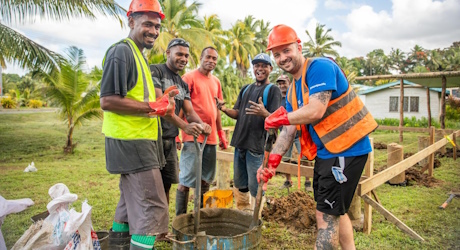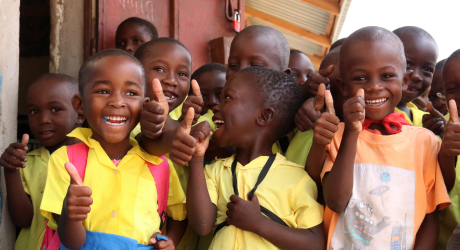Footprints Project
Since 2005, travelers like you have helped us change the world through micro-donations.
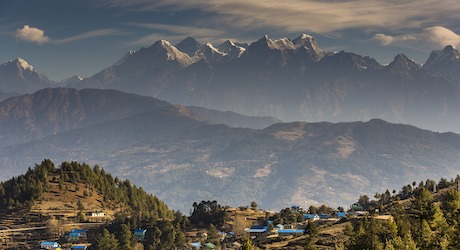
-
A total of
11863
Travelers
-
donated
$40002.21
(100% funded) -
to help improve
Education
-
impacting
1000
people -
in
Nepal
Project Background
Since the devastating earthquakes in Nepal in April & May 2015, the Australian Himalayan Foundation has focused their efforts on rebuilding schools in the impoverished lower Solukhumbu region. AHF has been providing essential health and education services in the area for over ten years.
Out of the 281 schools in the Solukhumbu area, 213 were badly damaged and 48 require rebuilding after the classrooms were completely destroyed by the earthquakes.
While the immediate emergency situation following the quakes is over, the project is now working to implement a major rebuilding program in the area to restore infrastructure based on the principle of ‘building Nepal back better’.
The AHF is working in collaboration with Australian structural engineers, Nepali engineers and the Ministry of Education in Nepal to build low cost, earthquake resilient school buildings.
Project Outcomes
It has now been 18 months since the devastating earthquakes hit Nepal in April and May 2015 and we are pleased to report that our ‘Rebuild Nepal’ program is well underway.
Of the 300-plus schools that the AHF supports through the Teacher Training & Quality Education (TTQE) program in the Lower Solukhumbu region of Nepal, more than 200 were assessed as being in urgent need of rebuilding or repair. We have been working hard to get children back to school by providing 19 temporary learning spaces for children while we plan the rebuild of earthquake resilient schools in the Everest region.

The cumulative effect of AHF’s and its in-country partner REED’s work, and the relationships and goodwill that has been built up over many years, both in Nepal and in Australia, has resulted in the rapid commitment of a number of Australian technical experts to help AHF and its partners with the challenges of ‘building back better’.
As part of the repair and reconstruction work, the AHF has also focussed on the upskilling of members of the communities in which these schools are based recognising that there are high rates of youth unemployment. AHF has funded masonry skills training courses for over 60 local people from the Lower Solukhumbu region. This training was conducted onsite by experienced trainers/engineers from the National Society for Earthquake Technology (NSET). Working with REED, this training has helped to build a skilled labour force that will boost local capacity and economy and AHF has already employed 10 graduates from across these training groups to complete the retrofit of those schools identified by AHF for repair.
Assistance from Project Partners
With the pro bono assistance of Australian engineering and architectural firms, Taylor Thompson Whitting (TTW) and HASSELL, we have pioneered an innovative lightweight steel frame design for schools that incorporates contemporary seismic design principles. These frames are light enough to be carried on the back of porters into remote areas, yet strong enough to withstand future earthquakes as well as monsoonal storms.
Another focus of the design is for it be “buildable”. The light gauge steel sections are made up into flat pack panels that each weigh about 10 kgs. This particular method of building in a flat pack module is certainly a first for Nepal. It means a very simple method for erection on site using steel screws installed with a screw gun. As a result, the construction time is significantly shorter than traditional techniques as there are less materials to assemble on site. The design also incorporates “green” building principles via rainwater collection; solar roof panels and substantially more windows than traditional classrooms and insulation in the building.
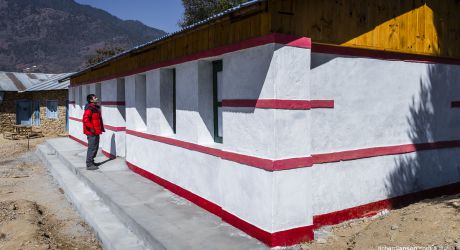
In addition, the Australian architectural firm Davenport Campbell has been working with AHF in the design and rebuilding of Garma Secondary College. Garma Secondary College is a special school with hostel facilities that caters to children with disability and specialises in vocational training. It was one of the worst hit villages in the Solukhumbu with eight out of its nine classrooms destroyed. Davenport Campbell developed architectural plans for a low-cost environmentally sustainable, earthquake resilient school using best practice seismic principles and specifically catering for the needs of students with disabilities.
We are also working in partnership with the Himalayan Trust NZ and the Himalayan Trust UK to rebuild and retrofit 22 schools through the Lower Solukhumbu Education Rebuild and Recovery (LSERR) project. The new building are using seismic design principles and utilising locally available materials wherever possible. This project is an ambitious, long-term commitment to the people of this region that will see all three organisations working together to build safer, stronger schools in Nepal.
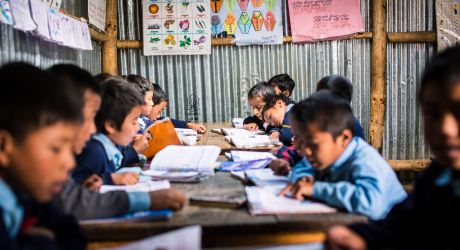
With AHF’s track record in the region and strong relationships with local NGOs, communities and the Nepalese Government, the innovative plans we have designed have been approved by the Nepalese Ministry for Education. It has been challenging work in the face of political instability in Nepal and the closure of the vital border crossing between Nepal and India late last year which resulted in critical shortages of fuel and other supplies across the country. This instability delayed our rebuilding work, as well as the lengthy approval process of the design plans by the Ministry of Education, but with the dedicated commitment of our in-country partners, REED, we are moving ahead.
What's Next?
Over the course of the next five years we intend to repair and rebuild 25 schools in total, involving a phased approach to the release of funds which will be based on prioritising the needs of each of the schools involved.
As at December 2016, AHF has completed the repair and retrofit of 20 classrooms in five schools and a further 18 schools are planned for 2016–2017.
We are also working hard to strengthen our existing programs in the region. We are doing this by providing long-term development assistance to over 300 schools in remote mountain communities in the Solukhumbu through teacher training, school scholarships and educational resources as part of our Teacher Training & Quality Education (TTQE) program. Our TTQE development program aims to bring about positive change for the benefit of all members of the community in which the schools are based and to involve these community members in providing long-term sustainable solutions at a local level.
We are very proud to have the continued support of The Footprints Network. Your support has been vital in making these achievements possible, and we look forward to continuing to work together to support school communities across the Solukhumbu with you in the future.
Traveling soon? When you buy travel insurance with us, you can make a contribution towards a cause you care about.
Get a quote



